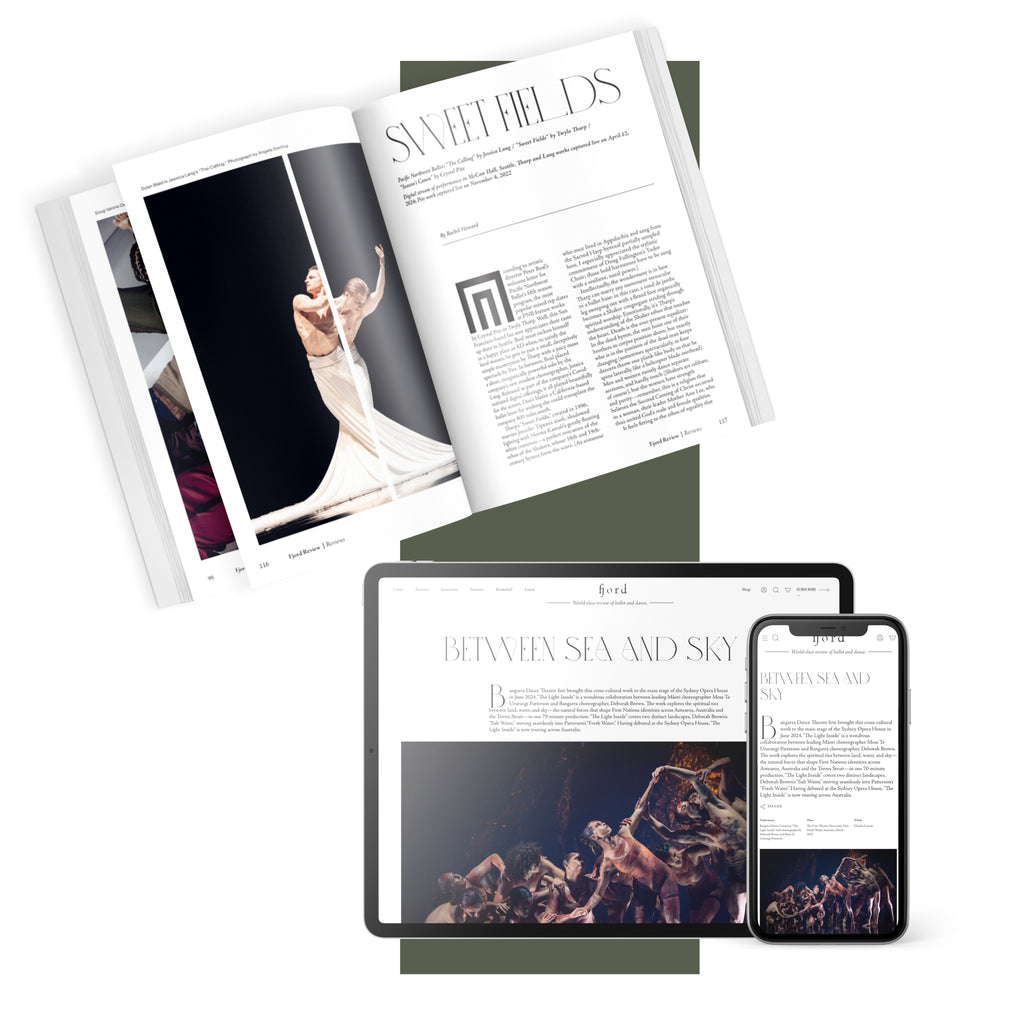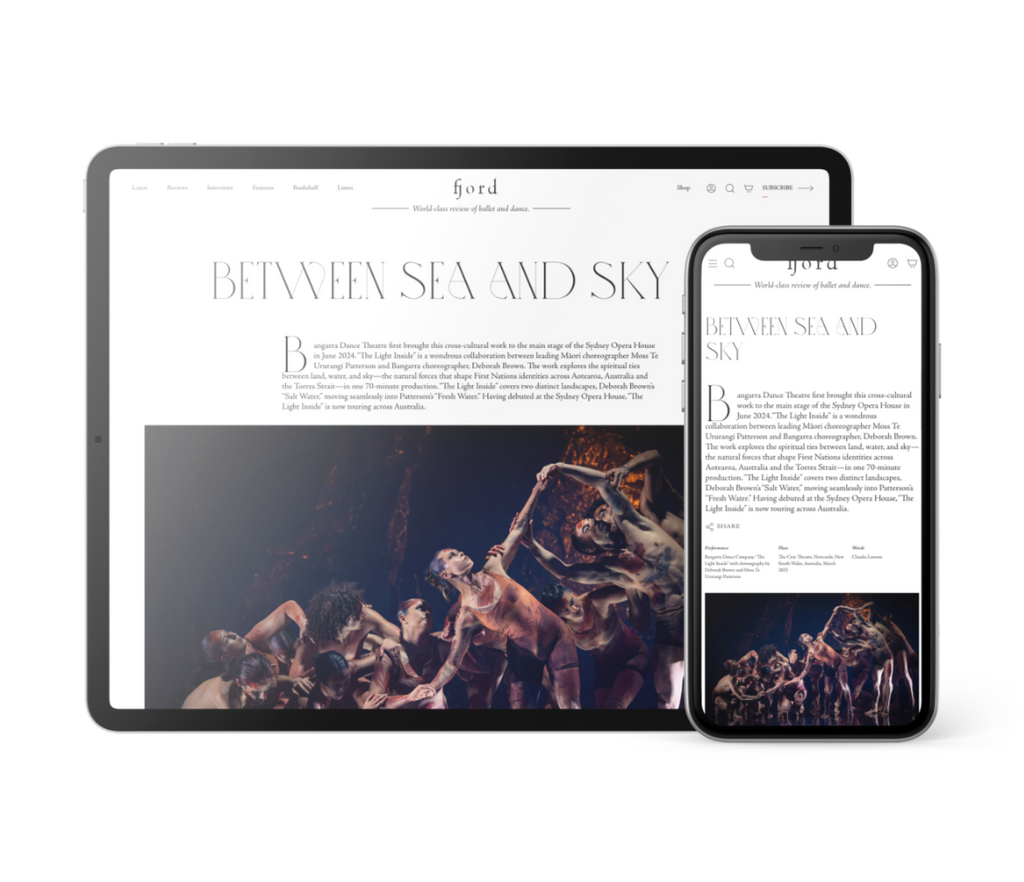Patel reacts physically to all of the interviews played, yet his movement plays second fiddle to “Mathroo Basha’s” set elements, which have been developed with greater attention to detail. For instance, the aforementioned rug, a replica of the artist’s grandmother’s carpet, was impressively tufted by Patel in his studio. Furthermore, Patel’s care in making his family feel comfortable and the thoughtfulness of his questions, which elicited authentic and meaningful answers, are undeniable. In comparison, repetitive torso undulations, hand flourishes, one legged balances, and arm circles feel somewhat underdeveloped, holding space for rather than responding to the text they accompany.
Some choreographic moments do stand out, however. A scene in which Patel performs rapid hand gestures to the rhythm of his mother’s speech, demonstrates his remarkable dexterity, while moments in which he performs jerky torso spasms, and tangles his hands awkwardly behind his back effectively represent how it may feel to be caught between two cultures. It’s as if his body is trying to digest, calibrate, unravel conflicting influences.
Towards the end of “Mathroo Basha,” Patel duets with his shadow on the side wall of the stage, carving his arms into wide, sculptural, warrior-like forms—a powerful nod to being split in two, and battling with a dual identity? The silhouette may also represent future generations of his family who will inherit his struggle and grapple with it in new ways. The success of this moment, like many others in Mathroo Basha,” relies heavily on lighting and the accompanying recording of Patel meditating on what future Baas—older women in Gujarati culture—in his family will think and look like. As this was only a preview performance, perhaps with time Patel will flesh out his physical vocabulary so that he can speak as eloquently through his body as he does through the recorded voices of his family members.










comments